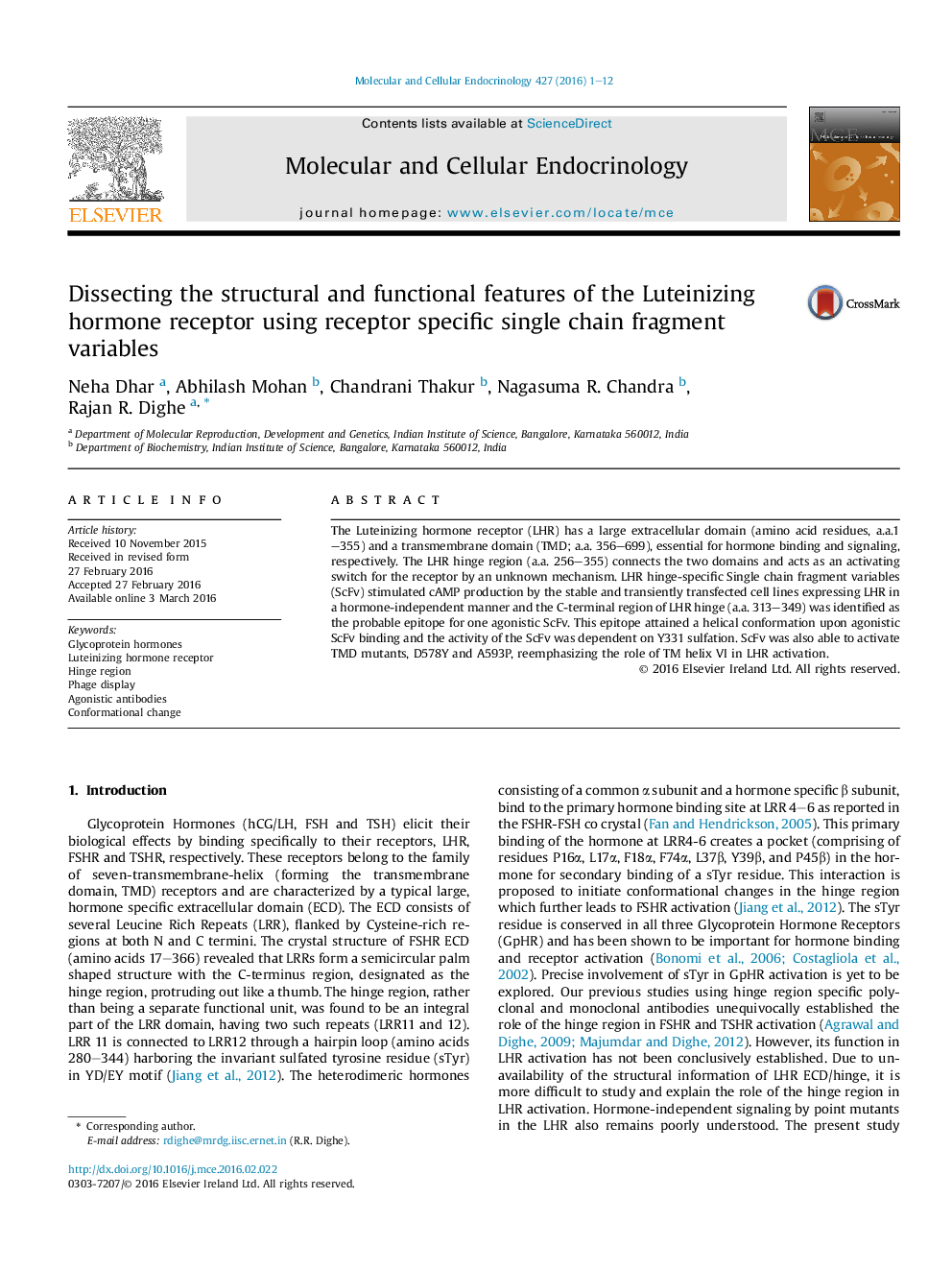| Article ID | Journal | Published Year | Pages | File Type |
|---|---|---|---|---|
| 2195605 | Molecular and Cellular Endocrinology | 2016 | 12 Pages |
•A LHR hinge-specific agonistic ScFv activates the receptor independent of hormone.•One ScFv stabilizes the disordered region in the C-terminus of the hinge region.•The activation mechanism relies on the sulfated Y331 residue.•The ScFv JE10 is able to activate LHR mutants D578Y and A593P.
The Luteinizing hormone receptor (LHR) has a large extracellular domain (amino acid residues, a.a.1–355) and a transmembrane domain (TMD; a.a. 356–699), essential for hormone binding and signaling, respectively. The LHR hinge region (a.a. 256–355) connects the two domains and acts as an activating switch for the receptor by an unknown mechanism. LHR hinge-specific Single chain fragment variables (ScFv) stimulated cAMP production by the stable and transiently transfected cell lines expressing LHR in a hormone-independent manner and the C-terminal region of LHR hinge (a.a. 313–349) was identified as the probable epitope for one agonistic ScFv. This epitope attained a helical conformation upon agonistic ScFv binding and the activity of the ScFv was dependent on Y331 sulfation. ScFv was also able to activate TMD mutants, D578Y and A593P, reemphasizing the role of TM helix VI in LHR activation.
